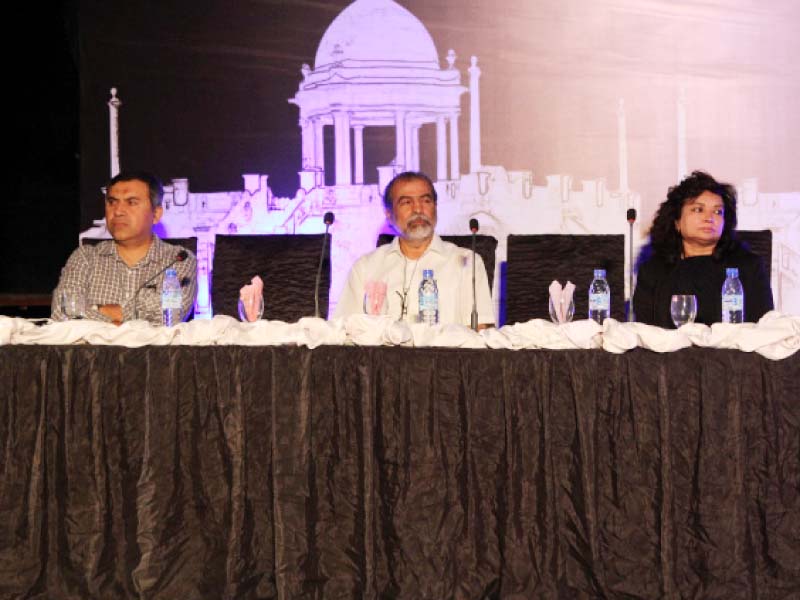
KARACHI:
Karachi is steeped in history. From colonial buildings to age-old temples, it is a historian’s paradise. Unfortunately, much of this heritage is under threat - mainly due to poor planning, commercialisation and the lack of interest of the government as well as the civil society.
Perhaps the biggest setback is that much of this heritage is undocumented - there is no official count of how many buildings or sites are of historical importance. This has to be the first step, says Prof Noman Ahmed, the chairperson of the department of architecture and planning at the NED University.
Prof Ahmed presented his arguments for the documentation process at a session, titled Karachi’s Built Heritage’, on the second day of the 3rd International Karachi Conference. The session was presided over by architect Arif Hasan.
Saving our heritage: WCLA gets Rs20 million to restore old buildings
The professor spoke at length on the need for scientific documentation of historical buildings and artefacts that need to be preserved under the Sindh Preservation Act, 1994.
According to Ahmed, the Heritage Foundation, in 1997, had prepared a list of 581 buildings to be protected under the law. The Sindh government had adopted that list, making it official. That meant nothing, and the buildings continued to suffer from neglect. In 2004, the NED University teamed up with the provincial culture department to review the list. Thus began the Karachi Re-survey Project. Soon, however, the scope of the project was widened and Dr Ahmed and his team set out to identify and add more buildings and open spaces to the list.
Preserving Heritage: Jinnah museum to be renovated
“Previous studies had found that around 2.4 per cent of Karachi’s buildings could be identified as heritage sites. Our survey has increased that number to 4.73 per cent, with a total of 1,034 buildings and open spaces having been identified to date.”
At this point, Prof Ahmed delved into the finer details of the project - the criteria for enlistment, varying categories and its location. But why would Prof Ahmed’s team go out and make all this effort to make a list of buildings? That is the point. “The built heritage is an important part of our cultural evolution, development and memory. We must not let it fade away,” he stressed.
The next speaker, Dr Kaleemullah Lashari, has been on the forefront of the struggle for the preservation of this heritage. He has served as the chairperson of the antiquities department of the Sindh government, making him the official custodian of the heritage sites in the province. For Dr Lashari, the degradation of these sites started at the time of partition. Karachi was made the country’s capital and its buildings that should have been granted special attention were instead used to house government offices and residences. “Meanwhile, the Evacuee Property Board Trust was formed that would take over properties and then hand them over to people who made claims through the settlement commission,” he explained. “The problem was that this board had no vision for the city’s master plan and it led to combined ownership of properties. Today, it is these joint properties that are in the most dilapidated condition,” he said. The Greater Karachi Master Plan of 1952 presented the answer to some of the most pressing problems of the time. Sadly, however, its implementation was lacking and it ended up causing more damage.
The third panelist, Dr Asma Ibrahim, who was referred to as ‘Madam Museum’ by Hasan, presented a case study of the Shri Varun Dev Temple at Manora Island that is in a highly dilapidated state. “The temple is of high importance as several historical sites, such as a church, a shrine and a lighthouse are located on the island,” she said. Her team is restoring the temple, which can be later used as a case study for future such ventures. Speaking on the importance of restoration of these historical sites, she said that at one point, Karachi had 104 temples. Only 22 remain.
Architect Mukhtar Husain, who was invited to discuss the presentations, stressed the need to bring the restored buildings to public use, referring to the Mohatta Palace and Flagstaff House as examples.
Published in The Express Tribune, November 8th, 2015.




























































COMMENTS
Comments are moderated and generally will be posted if they are on-topic and not abusive.
For more information, please see our Comments FAQ